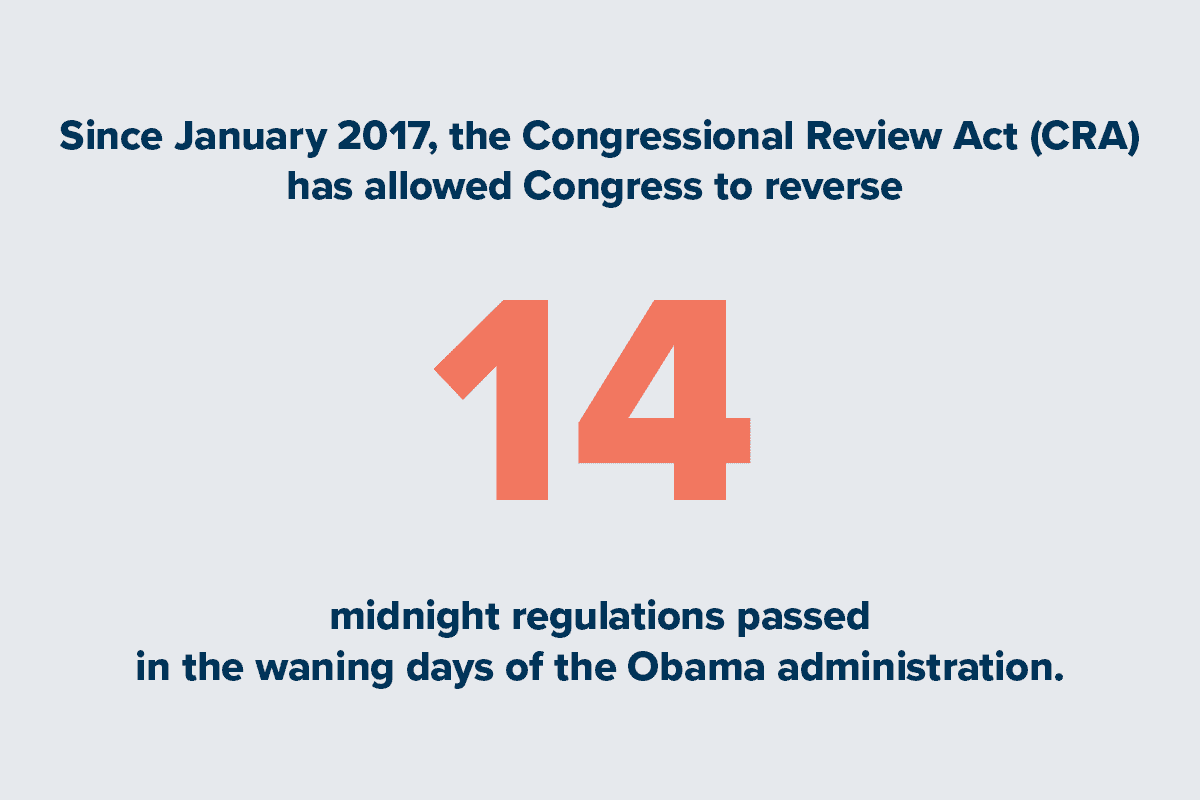Published
May 22, 2017
The Congressional Review Act (CRA) was passed in 1996 to give Congress the right to review and rescind regulations, yet it was only used once in its first 20 years. Since January, it has been one of the most effective weapons of our new government, allowing Congress to reverse 14 midnight regulations passed in the waning days of the Obama administration. With the window for CRA action on Obama-era rules now closed, we should look back on the strides made and gear up for the next phase in the regulatory reform fight.
Leaders in Congress and the administration deserve great credit for acting with urgency to provide some needed regulatory relief using the CRA. The U.S. Chamber of Commerce worked closely with them to advocate for the repeal of a variety of harmful and costly regulations.
One example was the Stream Protection Rule, which would have threatened more than 100,000 jobs by placing unnecessary burdens and restrictions on coal. The CRA also stopped a rule that would have shifted control of federal lands away from local powers and into the hands of Washington bureaucrats.
At the urging of the Chamber, Congress also rescinded the Federal Contracts Blacklisting Rule, a devastating regulation that would have forced federal contractors to disclose mere allegations of labor violations. This would have blocked them from federal contracts before they could even exercise their legal right to challenge the charges.
In addition, the Chamber supported the repeal of rules that would have hurt consumers and small businesses in the digital economy, jeopardized the retirement savings of hardworking Americans, and disadvantaged U.S. businesses through costly disclosure requirements.
These are only a few of the victories achieved through the CRA this year. But even with this progress, the regulatory system still needs a lot of work—not just relief from existing regulations but also an overhaul of the process for writing new ones. That’s why the Chamber is helping lead the charge for the Regulatory Accountability Act (RAA), which passed the House and is moving in the Senate. It would require cost-benefit analysis and transparency for new regulations and would represent the first major reform of the system since the Truman administration.
We’ve got a long road ahead to bring some sanity and relief to the regulatory process. But with the CRA, we’re off to a strong start. American businesses would have faced the prospect of billions of additional dollars in compliance costs and millions of hours of paperwork had it not been for the historic and unprecedented use of this critical law.
About the author

Thomas J. Donohue
Thomas J. Donohue is advisor and former chief executive officer of the U.S. Chamber of Commerce.




